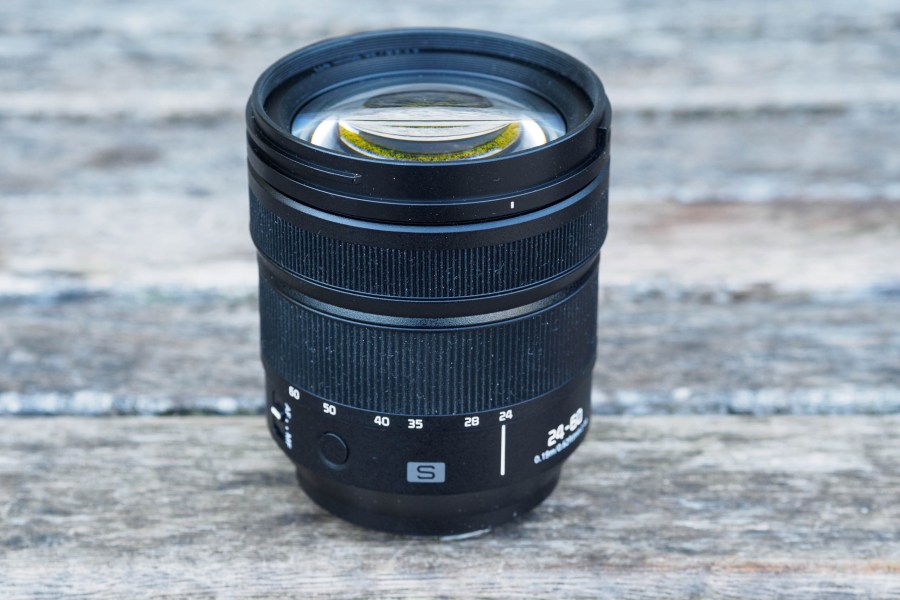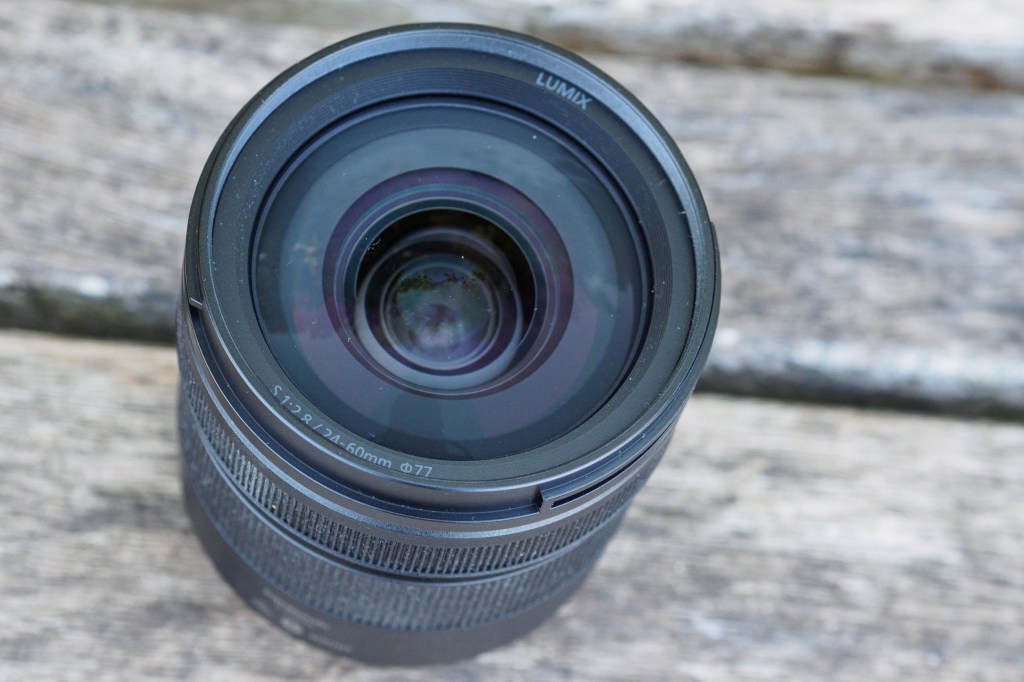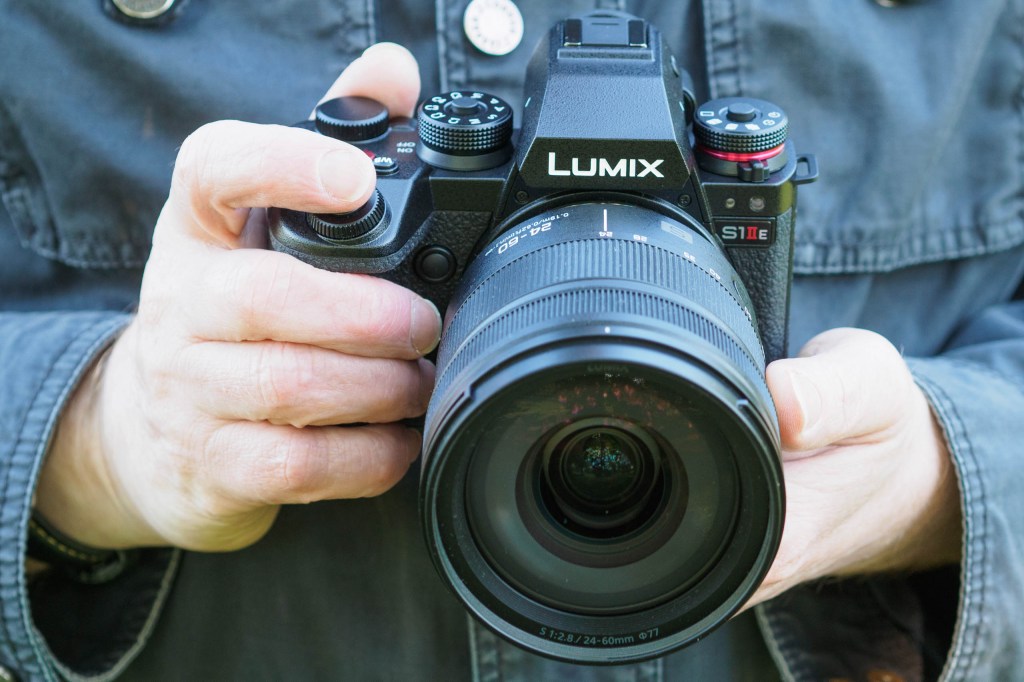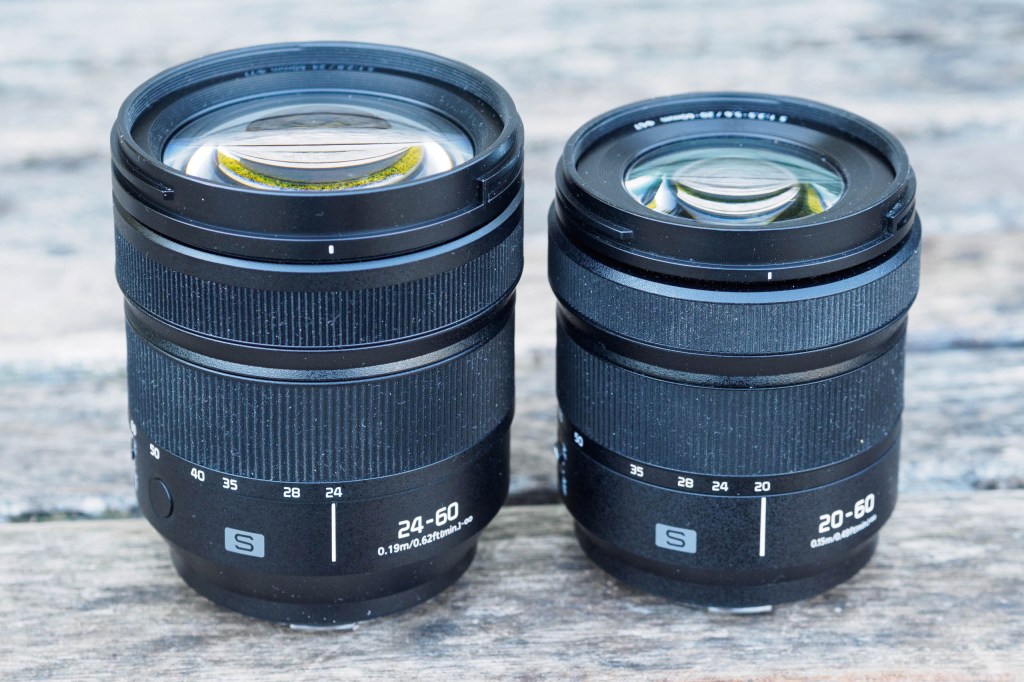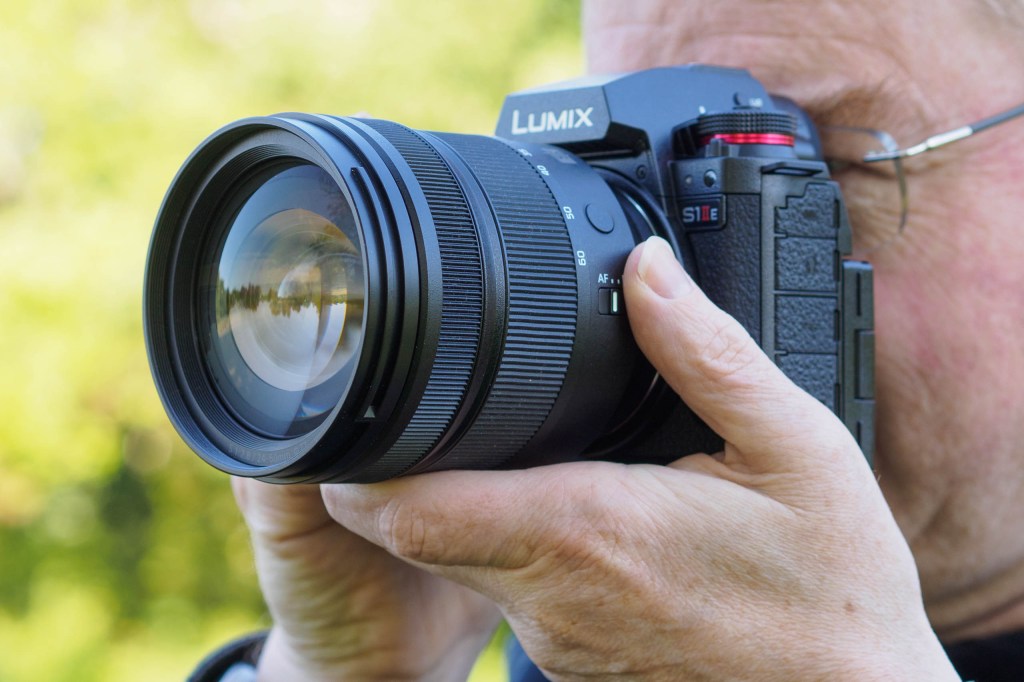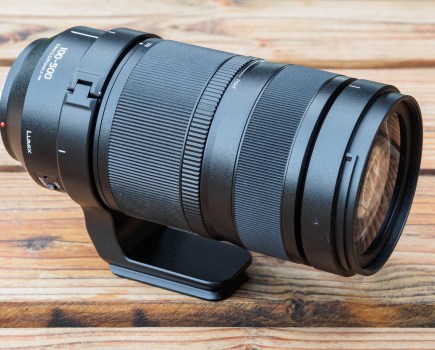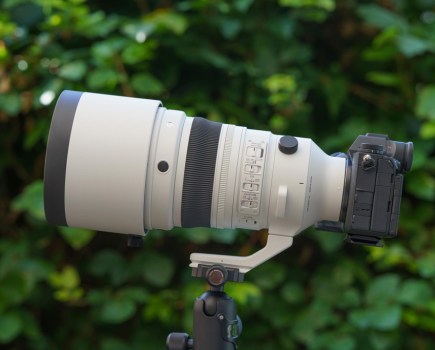Amateur Photographer verdict
Relatively compact and lightweight, and offering fine image quality, the Lumix S 24-60mm F2.8 is a nice upgrade over Panasonic’s 20-60mm kit zoom. It’s a great match for S5 and S1-series cameras.- Very good optics
- Fast, silent focusing
- Reasonably compact size
- Weather-sealed build
- 60mm feels pretty short
The Panasonic Lumix S 24-60mm F2.8 is a large-aperture standard zoom for use on the firm’s full-frame mirrorless cameras. It’s designed to be a general-purpose lens suitable for a broad range of subjects, ranging from architecture and landscapes to portraits. Compared to the existing high-end Lumix S Pro 24-70mm F2.8, it’s dramatically smaller and lighter, and at $899/£899, only about half the price.
Panasonic Lumix S 24-60mm F2.8 at a glance:
- $899 / £899
- L-mount
- 10cm long, 544g
- 77mm filter thread
- 19cm minimum focus
With Panasonic being part of the L-mount alliance, this lens can also be used on Leica and Sigma’s mirrorless cameras, such as the latest Leica SL3 and Sigma BF. In principle it could also be used on Leica’s older CL and TL-series APS-C format cameras, giving a 36-90mm equivalent range. But fundamentally it’s designed to complement Panasonic’s 24MP S1II and S5-series full-frame models.
All the other full-frame camera and lens makers also offer affordable f/2.8 zooms, and it’s interesting to compare the choices each has made. Sony produces a 24-50mm, which represents the shortest zoom range, but is the smallest and lightest of them all. Meanwhile, all the others have chosen to start at 28mm; 28-70mm for Canon and Sigma, and 28-75mm for Nikon and Tamron.
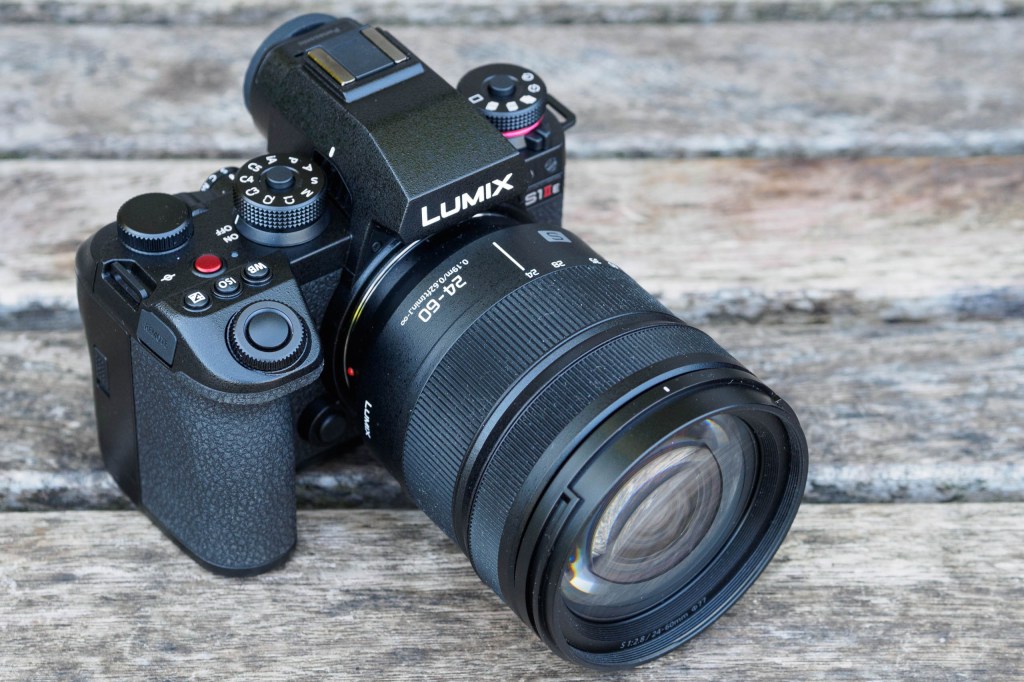
There’s certainly a case to be argued, though, that Panasonic’s 24-60mm is the best concept overall. None of those 28mm lenses can replicate its 24mm wideangle view, but you can always crop in a little from 60mm to match their slightly longer telephoto ends. So how does it measure up in practice?
Features
It may not wear a ‘Pro’ badge, but the Lumix S 24-60mm F2.8 is far from entry-level. To construct the optics, Panasonic has used 14 elements in 12 groups. This includes 3 aspherical elements to suppress aberrations and maximise sharpness towards the edges and corners of the image, plus 2 Extra-low Dispersion (ED) and 1 Ultra ED glass element to minimise colour fringing.
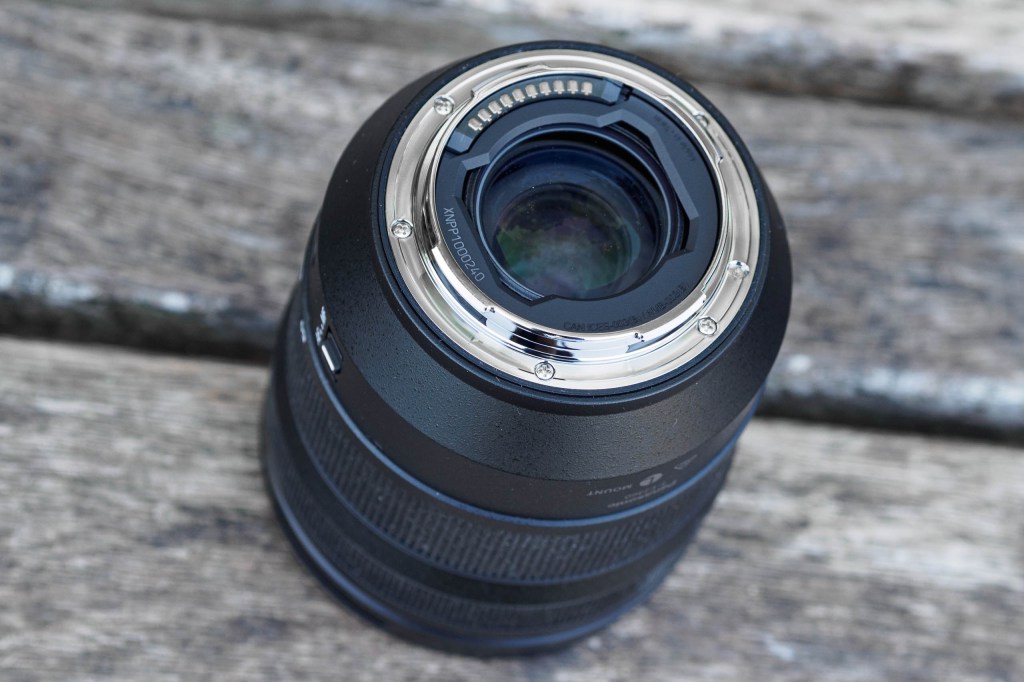
Focusing is internal, with Panasonic’s Dual Phase Linear motor promising fast, precise autofocus. The minimum focus distance increases from 19 to 33cm as you zoom in, but the 0.3x maximum magnification is achieved in the middle of the range, at the 30mm position.
Panasonic says that the barrel employs dust and splash-resistant construction, thanks to a series of seals around the mount and moving parts. The lens should also keep working in temperatures down to -10°C. A fluorine coating helps keep the front glass clean of raindrops and fingerprints.
A bayonet-fitting flower-shaped lens hood is supplied in the box and incorporates a locking button to stop it being knocked out of position accidentally. The hood also reverses neatly for transport, without blocking the zoom ring. Filter users are catered for with a 77mm thread.
Build and handling
In terms of design language and build quality, the 24-60mm is much like Panasonic’s other Lumix S lenses. Its plastic-skinned barrel plays host to a broad zoom ring at its centre, plus a smoothly rotating manual focus ring up front. The latter is distinctly larger in diameter, so you shouldn’t get the two mixed up. There’s an AF/MF switch on the barrel, which is perhaps a bit unnecessary, given that most Panasonic cameras have the same control conveniently placed on the body.
Size-wise, the Panasonic Lumix S 24-60mm F2.8 measures 99.9mm long, 84mm in diameter, and weighs 544g. Compare this to the 24-70mm F2.8 Pro, which is 140mm long and a hefty 935g; I know which one I’d prefer to carry around all day. In fact, the 24-60mm isn’t that much larger than the 20-60mm F3.5-5.6 kit zoom that comes with many Lumix S cameras.
The lens debuts a couple of new controls, at least for Panasonic. Firstly, there’s a Focus button on the barrel, whose function can be assigned from the camera body. This button is rather small and recessed, though, which means you might struggle to find it quickly by touch. But on a more positive note, you’re unlikely to press it by accident.
Also, the manual focus ring can now be re-assigned to change the aperture or set exposure compensation. But this only works on S1II-series models (and the S1RII will need a firmware update). Given that aside from the rather basic S9, Panasonic cameras already have three control dials on the body, and I’m not sure this is a particularly useful thing to do – I’d just leave it set to manual focus.
In use, I found the 24-60mm to be a great match for the Panasonic Lumix S1IIE that I used for testing. The combination just feels really nicely balanced in your hand. If I have one criticism of the lens’s handling, though, it’s that the zoom ring is a little tight, which can make it difficult to achieve a really precise composition.
Autofocus
Turning our attention to autofocus, here the lens performs very well. It’s quick and essentially silent, and I had no problems at all with accuracy. Videographers will find that a little focus breathing is visible at 24mm, with the angle of view getting slightly wider on focusing closer. However, breathing is extremely well suppressed at longer focal lengths.

If you ever need to switch to manual focus, then you’ll find that the focus ring is super-smooth and very precise, which makes it easy to get perfectly sharp results.
Performance
I used the Panasonic Lumix S 24-60mm F2.8 as my main lens while reviewing the Lumix S1IIE, and I’ve been very pleased by the images it creates. It may not be designated as one of the firm’s ‘Pro’ optics, but it’s still very good indeed. Images look clean and detailed on the 24MP sensor, with no problematic aberrations.

Indeed the lens’s sharpness is very impressive. Examining my sample images shows plenty of well-defined fine detail right into the corners of the frame, pretty much regardless of focal length, aperture, or focus distance. Overall, f/5.6 probably gives the sharpest results, although on full-frame you’ll often want to stop down further to f/8 or f/11 for extra depth-of-field.

Fine detail is naturally a bit less crisp at f/2.8, especially towards the corners of the frame. But chances you simply won’t notice this in real-world use, as it will be totally outweighed by the fact that most of the scene is likely to be out-of-focus anyway. Any areas that are in-focus will therefore look nice and sharp in comparison, wherever they are in the frame.

As for other optical aberrations, you just won’t see any. Panasonic was one of the pioneers of using software compensation and has done so very effectively again here. Distortion and lateral chromatic aberration are corrected both in-camera and in raw processing, so straight lines in the scene remain straight in the image, and there’s no unsightly colour fringing towards the edges of the frame. Panasonic cameras correct vignetting by default, too. The net result is that images look extremely clean and natural.

With its large aperture, this lens can also give some nicely blurred backgrounds. Here I’ve been pleased by how smoothly the out-of-focus elements are rendered. It gives particularly good results when shooting close-ups at the longer end of the zoom.

Last but not least, the 24-60mm F2.8 also acquits itself well when shooting directly into the light. There’s little sign of any image degradation due to flare and ghosting. Overall, Overall, this adds up to a highly creditable optical performance.
Panasonic Lumix S 24-60mm F2.8: Our Verdict
The Lumix S 24-60mm F2.8 is a very welcome addition to Panasonic’s line-up. Previously if you wanted to upgrade from the 20-60mm kit zoom to higher optical quality, your choices were either the $1300 /£1099 Lumix S 24-105mm F4 OIS, or to spend a lot more on the Lumix S 24-70mm F2.8 Pro. So it’s great that you can now get a nice f/2.8 zoom at a more affordable price.
This is the kind of lens that you can leave on your camera safe in the knowledge that will deliver clean, detailed images shot-after-shot. There’s nothing especially exciting or ground-breaking here, just a really solid performer that does its job with no fuss. It’s a particularly good match to Panasonic’s S1 and S5 series cameras.
For L-mount users looking for an affordable f/2.8 standard zoom, the main alternative is the Sigma 28-70mm F2.8 DG DN. Features-wise the two lenses are closely matched, so the choice is likely to depend mainly on which focal length range you’d prefer, and their relative prices. This depends substantially on where you live; in the US the Sigma is more expensive at $989, but in the UK it’s cheaper (£779).

If I have one reservation personally, it’s that 60mm feels really short for a standard zoom – I spent a lot of time wishing it was just that bit longer. However, this is very much personal preference. If you’re confident the zoom range will suit you, this lens is a fine option for L-mount users.

Follow AP on Facebook, X, Instagram, YouTube and TikTok.
Panasonic Lumix S 24-60mm F2.8 full specifications
| Price | $899 / £899 |
| Filter Diameter | 77mm |
| Lens Elements | 14 (3 aspherical, 1 UED, 2 ED) |
| Groups | 12 |
| Diaphragm blades | 9 |
| Aperture | f/2.8 – f/22 |
| Minimum focus | 19-33cm |
| Length | 99.9mm |
| Diameter | 84mm |
| Weight | 544g |
| Lens Mount | L-mount |
| Included accessories | Caps, hood |

